
Nature conservation project: Desert greening
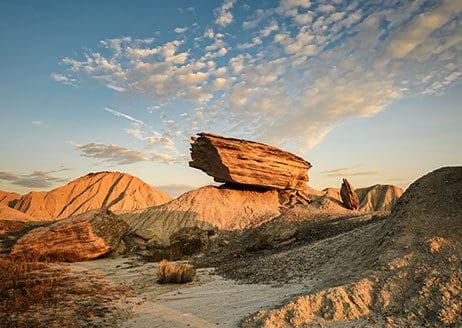
Desert Greening - The desert lives again!
There are more nature conservation projects than you can imagine. But unfortunately, there are only a few among them that actually make a real contribution to nature conservation. Often, a large part of the money donated goes into pockets where it really has no business. But even when it gets to where it is supposed to go, there is still often the question of how helpful the aid provided really is.
It took us a long time to find a project with "Desert Greening" that we really trusted and that, in our eyes, makes a real contribution to the preservation of our habitat.
The idea behind this project is to naturally rebalance the imbalance we have brought to nature. It was created in 2005 by Madjid Abdellaziz to counteract the increasing spread of drought in Algeria.
It took us a long time to find a project with "Desert Greening" that we really trusted and that, in our eyes, makes a real contribution to the preservation of our habitat.
The idea behind this project is to naturally rebalance the imbalance we have brought to nature. It was created in 2005 by Madjid Abdellaziz to counteract the increasing spread of drought in Algeria.
Man-made chaos
Since the beginning of the mechanization of mankind, we have repeatedly intervened in the natural cycle in the most diverse ways. We have brought animals and plants to places where they had no business being. There they spread, sometimes in devastating quantities, while the native species were pushed back further and further. We have altered water cycles and ocean currents, built dams, destroyed ecosystems, and even changed the weather.
Most approaches to cleaning up this mess involve launching more interventions to counteract the old ones. But in most cases, we are only adding to the chaos. Madjid Abdellaziz was therefore interested in creating a method to support natural harmonization. Instead of fighting the chaos that humans have created by creating new chaos, he wanted to support the earth in its self-healing.
Since the beginning of the mechanization of mankind, we have repeatedly intervened in the natural cycle in the most diverse ways. We have brought animals and plants to places where they had no business being. There they spread, sometimes in devastating quantities, while the native species were pushed back further and further. We have altered water cycles and ocean currents, built dams, destroyed ecosystems, and even changed the weather.
Most approaches to cleaning up this mess involve launching more interventions to counteract the old ones. But in most cases, we are only adding to the chaos. Madjid Abdellaziz was therefore interested in creating a method to support natural harmonization. Instead of fighting the chaos that humans have created by creating new chaos, he wanted to support the earth in its self-healing.
Normalization of the weather
With the help of Wilhelm Reich, N. Tesla and V. Schauberger, he succeeded in putting a so-called sphere harmonization plant into operation, which restored the natural rain cycle. Unlike techniques such as HAARP and the chemtrails, this did not involve artificial radiation or chemical toxins. It was much more about cleansing the atmosphere of these very toxins and disruptive frequencies so that conditions could return to normal. This also resulted in a normalization of the weather. The rain that had previously been normal in the area resumed after a long period of drought. The moisture that was absorbed by the soil allowed for new plant growth and soon greening of the area could begin. Previously, the water table had continued to drop permanently, but now it was filling up again for the first time. With it, new life was able to re-emerge in an area that had been almost completely killed off.
With the help of Wilhelm Reich, N. Tesla and V. Schauberger, he succeeded in putting a so-called sphere harmonization plant into operation, which restored the natural rain cycle. Unlike techniques such as HAARP and the chemtrails, this did not involve artificial radiation or chemical toxins. It was much more about cleansing the atmosphere of these very toxins and disruptive frequencies so that conditions could return to normal. This also resulted in a normalization of the weather. The rain that had previously been normal in the area resumed after a long period of drought. The moisture that was absorbed by the soil allowed for new plant growth and soon greening of the area could begin. Previously, the water table had continued to drop permanently, but now it was filling up again for the first time. With it, new life was able to re-emerge in an area that had been almost completely killed off.
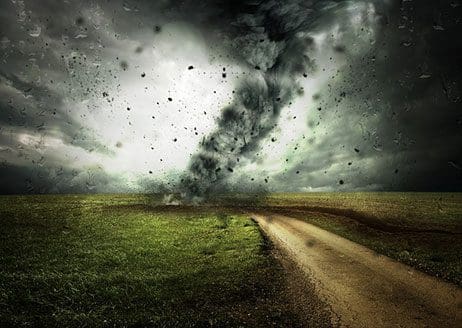
New life for the desert
In the Western world, scientists have already come up with a wide variety of concepts to re-vegetate deserts. But most of them are complex, extremely expensive and not very promising. Usually, the idea is to impose a new, greener face on the desert rather than to help it regenerate itself. But this is precisely the idea behind desert greening.
In the Western world, scientists have already come up with a wide variety of concepts to re-vegetate deserts. But most of them are complex, extremely expensive and not very promising. Usually, the idea is to impose a new, greener face on the desert rather than to help it regenerate itself. But this is precisely the idea behind desert greening.
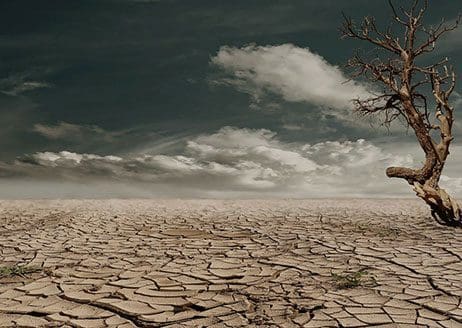
Global water scarcity on a blue planet
The Sahara Desert in particular has been expanding for years and already encompasses areas that were previously green and fertile land. Alongside southern Europe, Australia and areas of Asia, Africa is the world's most vulnerable to increasing water scarcity. According to WHO estimates, more than 1.1 million people worldwide already lack access to usable drinking water.
This is not because there is no more water in the world. Water doesn't just disappear and leave our planet in search of another one where it might be nicer. No, the water is still there. It's just increasingly contaminated, or else it's distributed in an unfavorable way, so that in some places there's too much and in many others there's almost none at all. Since warm air can absorb much more water than cold air, much more water evaporates over warm regions than over cold ones.
The Sahara Desert in particular has been expanding for years and already encompasses areas that were previously green and fertile land. Alongside southern Europe, Australia and areas of Asia, Africa is the world's most vulnerable to increasing water scarcity. According to WHO estimates, more than 1.1 million people worldwide already lack access to usable drinking water.
This is not because there is no more water in the world. Water doesn't just disappear and leave our planet in search of another one where it might be nicer. No, the water is still there. It's just increasingly contaminated, or else it's distributed in an unfavorable way, so that in some places there's too much and in many others there's almost none at all. Since warm air can absorb much more water than cold air, much more water evaporates over warm regions than over cold ones.
The air is then swirled by the winds and the water carried along reaches colder regions, where it rains down again. For this reason, especially in hot regions, it is important that the earth is surrounded by a mantle of vegetation that stores and holds the water reserves. As soon as this vegetation mantle is missing, the risk of drought increases and the land becomes drier and drier.
From devastation to the creation of new paradises
It is precisely this process that Desert Greening aims to counteract. The place where the project started is now called Djanan, and it has become a unique oasis. But the rest of Algeria is also benefiting from a rising water table and, as a result, increasing crop yields. Many refugees who lost their homes due to droughts or wars in other regions of Africa found a new home here and were able to participate in its creation. The idea now is to further expand the natural desert greening and thus create a green belt that stops the spread of the Sahara and thus provides a new home for people, animals and plants. bietet.
From devastation to the creation of new paradises
It is precisely this process that Desert Greening aims to counteract. The place where the project started is now called Djanan, and it has become a unique oasis. But the rest of Algeria is also benefiting from a rising water table and, as a result, increasing crop yields. Many refugees who lost their homes due to droughts or wars in other regions of Africa found a new home here and were able to participate in its creation. The idea now is to further expand the natural desert greening and thus create a green belt that stops the spread of the Sahara and thus provides a new home for people, animals and plants. bietet.
How can I help?
As you can imagine, Desert Greening is a very extensive and complex project that works on many levels at once. After all, re-greening deserts involves much more than simply coaxing a few rain clouds to shed their ballast over the desert.
Many of the countries affected by desertification, or desert sprawl, also suffer from severe poverty, political unrest, disease, and corrupt or dictatorial systems. Accordingly, Desert Greening can also use help at all levels. Here are some examples of how you can contribute:
1. by making a direct donation in the amount that feels good and right to you. The best way to do this is directly through the Desert Greening website: Go to the donation section
As you can imagine, Desert Greening is a very extensive and complex project that works on many levels at once. After all, re-greening deserts involves much more than simply coaxing a few rain clouds to shed their ballast over the desert.
Many of the countries affected by desertification, or desert sprawl, also suffer from severe poverty, political unrest, disease, and corrupt or dictatorial systems. Accordingly, Desert Greening can also use help at all levels. Here are some examples of how you can contribute:
1. by making a direct donation in the amount that feels good and right to you. The best way to do this is directly through the Desert Greening website: Go to the donation section
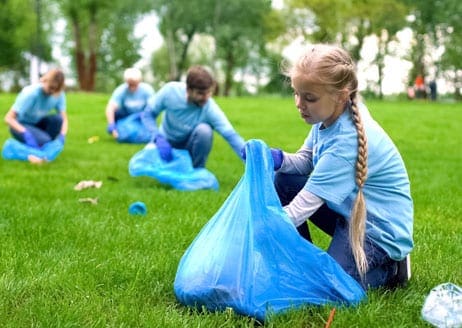
2. as a life adventurer walk sponsor: become part of our charity walk and think of an amount you would like to donate to Desert Greening for each kilometre we walk. Whether you want to donate one cent per kilometre, 10 cents, 27 cents, €1 or more is up to you. The duration of your partnership is also up to you, because you don't commit to anything and can withdraw at any time if you feel like it. Just send us a short message, and we will discuss everything with you: To the contact form
3. as a volunteer: Desert Greening is a project that wants to motivate people to become active themselves and to provide the help you want to provide. Whether you want to be an "ambassador" from Europe and draw attention to the work of Desert Greening and thus provide even more support, or whether you want to help directly on site and green a piece of desert yourself, is entirely up to you. You can find more information on the Desert Greening website under "International Projects".
3. as a volunteer: Desert Greening is a project that wants to motivate people to become active themselves and to provide the help you want to provide. Whether you want to be an "ambassador" from Europe and draw attention to the work of Desert Greening and thus provide even more support, or whether you want to help directly on site and green a piece of desert yourself, is entirely up to you. You can find more information on the Desert Greening website under "International Projects".
4. as a tree sponsor: Trees are the supporting element of Desert Greening. For it is they that create a microclimate in which life for other beings, be they plants, animals or humans, is possible in the first place. They harmonize temperatures, hold water, slow down the wind and create an atmosphere that allows us to breathe. The spread of deserts around the world is primarily due to deforestation.
Conversely, new trees also make it possible to stop and reverse the devastation. The larger a forested area is, the more life is created in it and the more strength it acquires to eventually continue spreading all by itself. Therefore, one of Desert Greening's declared goals is to plant one million trees in the desert.
And this can only be achieved with the help of tree sponsors. To find out what you need to do to become a tree sponsor yourself, go to www.desert-greening.com/baumpflanzung
Conversely, new trees also make it possible to stop and reverse the devastation. The larger a forested area is, the more life is created in it and the more strength it acquires to eventually continue spreading all by itself. Therefore, one of Desert Greening's declared goals is to plant one million trees in the desert.
And this can only be achieved with the help of tree sponsors. To find out what you need to do to become a tree sponsor yourself, go to www.desert-greening.com/baumpflanzung
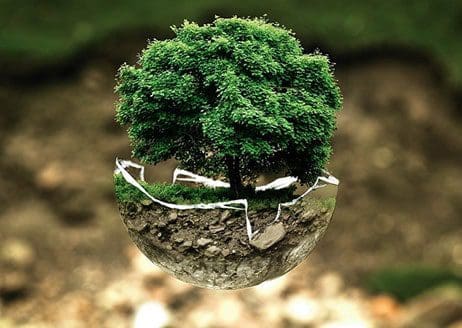
5. as active water savers: The fact that water in particular is becoming such a scarce commodity, even though our planet is full of it, is primarily related to our irresponsible use of this element. It also means that each one of us can already make a big contribution by honouring the water we use and using it mindfully. This does not primarily mean that we have to save water, because contrary to what is often believed, it does not break down because it flows through a faucet or because we blast our lawn with it. The real problems are caused much more by the many chemicals and toxins we contaminate our water with.
For example, make sure you don't use chemical soaps, detergents or toothpastes. Avoid hormone-containing medications and stay away from chemical fertilizers or pesticides for your garden. In this way, you can actively help save the water, as many of our everyday toxins are difficult or impossible to remove from the water cycle. We already have an alarmingly high number of hormones, plasticizers, plastic microparticles and many other pollutants in our water cycle, which we then take back into our organism ourselves through our fresh water. It is obvious that this cannot go well in the long run. Therefore, our call to you: Become a water saviour and motivate others to do the same. For example, by sharing your stories and experiences here: To the contact form
All further information about the project itself and how you can support it can be found on the Desert Greening website.
Thank you for your support and have fun helping!
For example, make sure you don't use chemical soaps, detergents or toothpastes. Avoid hormone-containing medications and stay away from chemical fertilizers or pesticides for your garden. In this way, you can actively help save the water, as many of our everyday toxins are difficult or impossible to remove from the water cycle. We already have an alarmingly high number of hormones, plasticizers, plastic microparticles and many other pollutants in our water cycle, which we then take back into our organism ourselves through our fresh water. It is obvious that this cannot go well in the long run. Therefore, our call to you: Become a water saviour and motivate others to do the same. For example, by sharing your stories and experiences here: To the contact form
All further information about the project itself and how you can support it can be found on the Desert Greening website.
Thank you for your support and have fun helping!


